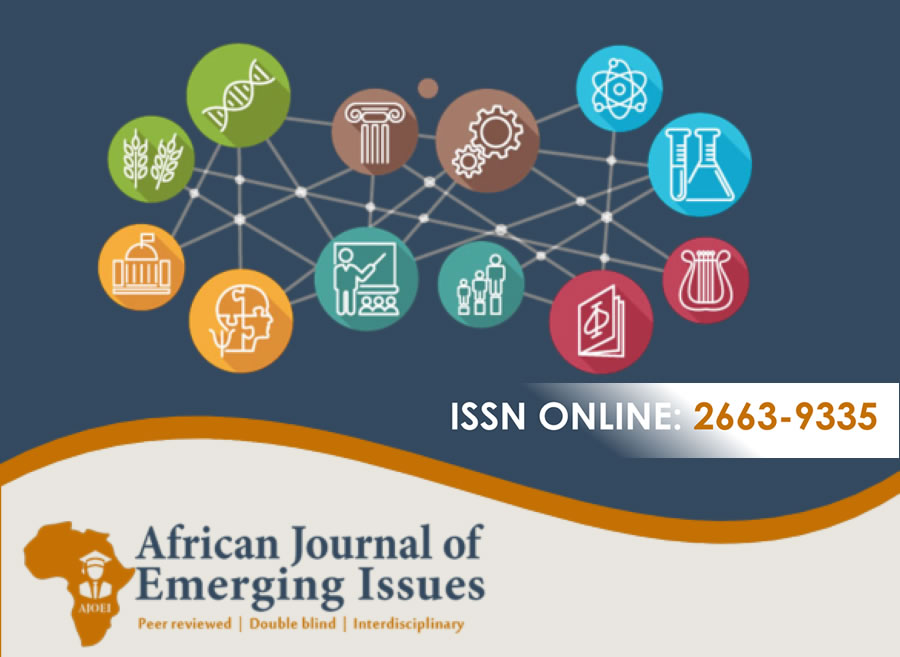WORKFORCE PLANNING PRACTICE AND PERFORMANCE OF MEGA DAM PROJECTS IN KENYA
Abstract
The purpose of the study was to examine the effects of workforce planning practice on performance of Mega dam projects in Kenya. This study was guided by Theory of Change, Agency Theory. The study targeted 322 registered civil engineers and registered land surveyors in Kenya as of the year 2023 and a sample size of 138 respondents was picked using Taro Yamane formular of sample calculation. Data collection instruments were structured questionnaire. The multiple regression analysis models were developed to establish the relationship between dependent and independent variables. Findings revealed that workforce planning practices have a significant positive relationship on performance of mega dam projects in Kenya. The results confirm that workforce planning is a key determinant of the successful execution of mega dam projects in Kenya. To enhance workforce planning and improve the performance of mega dam projects in Kenya, organizations should develop comprehensive workforce strategies aligned with project timelines, invest in continuous training programs to enhance employee skills, and adopt technology-driven workforce management tools for accurate labor forecasting.
Keywords: Workforce Planning Practice, Performance, Mega Dam, Projects
References
Adam, N. (2024). Human resource management practices and staff work performance the case of Sagnarigu Municipality in the Northern Region, Ghana (Doctoral dissertation, University of Education, Winneba).
Adedeji, T., Targema-Takema, R., Griffiths, A., & Scott, P. (2022). Theory of Change: A Tool for Engaging the Health and Care Workforce in Developing Digital Skills. In Digital Professionalism in Health and Care: Developing the Workforce, Building the Future (pp. 102-106). IOS Press
Clark, H. (2019). Theory of change: The real thing and how to design successful social change projects. Methodologies for practice research: Approaches for professional doctorates. London: SAGE, 227-248.
Dahunsi, S. (2023). Predicting Process Area Workforce for Human Resource Development in a Nuclear Power Plant. Oak Ridge National Laboratory (ORNL), Oak Ridge, TN (United States).
Gheidar-Kheljani, J., & Jahedi, P. (2024). Identifying a Theoretical Framework for Megaprojects Success and Failure Factors: A Meta-Synthesis Approach. Journal of value creating in Business Management, 3(4), 225-244
Gomathy C. K., K. V. Reddy (2022). The Impact of Human Resource Planning on Productivity International Journal of Scientific Research in Engineering and Management (IJSREM) Volume: 06 (04)
Hamza, M., Shahid, S., Bin Hainin, M. R., & Nashwan, M. S. (2022). Construction Labour Productivity: Review Of Factors Identified. International Journal of Construction Management, 22(3), 413-425.
Hong, P. Y. P., Choi, S., & Key, W. (2018). Psychological self-sufficiency: A bottom-up theory of change in workforce development. Social Work Research, 42(1), 22-32.
Jooss, S., Collings, D. G., McMackin, J., & Dickmann, M. (2024). A skills‐matching perspective on talent management: Developing strategic agility. Human Resource Management, 63(1), 141-157.
Kiettikunwong, N., & Narot, P. (2024). Implications of the Theory of Change in Program Evaluation. In Determining Outcomes and Impacts of Human Resource Development Programs (pp. 53-72). Singapore: Springer Nature Singapore.
Kilbride, K., Galvin, E., Desselle, S., Gavin, B. G., Quigley, E., Flear, M., ... & Hayden, J. (2023). Stakeholder perspectives and experiences of the implementation of remote mental health consultations during the COVID-19 pandemic: a qualitative study.
Kolter, M., Grunow, M., Kolisch, R., & Stäblein, T. (2024). Strategic workforce and project planning for engineering automotive production systems: tackling the transition to electric vehicles. International Journal of Production Research, 1-21.
Mchopa, A. (2021). Research Methods: Qualitative and Quantitative Approaches Journal of Co-operative and Business Studies (JCBS), 5(1).
Merrow, E. W. (2024). Industrial megaprojects: concepts, strategies, and practices for success. John Wiley & Sons.
Micheli, G. J. L., Martino, A., Porta, F., Cravello, A., Panaro, M., & Calabrese, A. (2023). Workforce planning in project-driven companies: a high-level guideline. Frontiers in Industrial Engineering, 1, 1267244.
Müller-Mahn, D., Mkutu, K., & Kioko, E. (2021). Megaprojects—mega failures? The politics of aspiration and the transformation of rural Kenya. The European Journal of Development Research, 33, 1069-1090.
Mutschinski, K., & Coles, N. A. (2021). The African Water Vision 2025: its influence on water governance in the development of Africa's water sector, with an emphasis on rural communities in Kenya: a review. Water policy, 23(4), 838-861.
Nedzelsky, R. (2016). Human resources allocation in project management. A Paper presented during 27th IBIMA conference on Innovation Management and Education Excellence Vision 2020: from Regional Development Sustainability to Global Economic Growth will be held in Milan, Italy 4-5 May 2016. Retrieved on 26/08/22 from https://www.researchgate.net/publication/303895710
Onziru, B., & Kimutai, G. (2022). Stakeholder Participation and Sustainability of World Bank Funded Water Projects in Karamoja, Uganda. The International Journal of Business & Management, 10(1).
Ployhart, R. E., & Morris, M. A. (2024). Workforce Planning. Systems of Psychotherapy: A Transtheoretical Analysis, 1.
Priyantoro, A. (2022). Exploring and Integrating Perspectives on Organisational Change: Examining the Design and Implementation Process of a Human Resource Information System in a Public Sector Organisation.
Raja, K.A.K. & Murali, K. (2020). Resource Management in Construction Project. International Journal of Scientific and Research Publications, 10 (5),
Rodjam, C., Thanasrisuebwong, A., Suphuan, T., & Charoenboon, P. (2020). Effect of Human Resource Management Practices on Employee Performance Mediating by Employee Job Satisfaction. Systematic Reviews in Pharmacy, 11(3).
Saeed M., I. I. Alasan, F. K. Afridi (2022). Impact of Success Factors on Project Success: Empirical Evidence from Khyber Pakhtunkhwa. International Journal of Special Education Vol.37(3).
Sarihi, M., Shahhosseini, V., & Banki, M. T. (2020). Multiskilled project management workforce assignment across multiple projects regarding competency. Journal of Construction Engineering and Management, 146(12), 04020134.
Sundaram, K. T. (2022). Effective workforce utilization in organizations: Key aspects to consider in portfolio and project management. International Journal of Management IT and Engineering, 12(10), 45-49.
Walker, J. S., & Matarese, M. (2011). Using a theory of change to drive human resource development for wraparound. Journal of Child and Family Studies, 20, 791-803.
Weiss, C. H. (1995). Nothing as practical as good theory: Exploring theory-based evaluation for comprehensive community initiatives for children and families. New approaches to evaluating community initiatives: Concepts, methods, and contexts, 1, 65-92.





